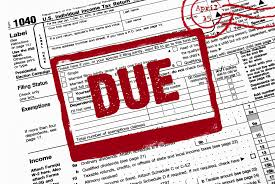Taxpayers Have Rights Too! – The IRS is a powerful collection agency and has the right to collect any tax amounts which are owed. However, taxpayers also have certain guaranteed rights and tax time is a good time to be reminded of what those rights are. In addition to the obvious guaranty of privacy, confidentiality and courteous, professional service, the IRS has numerous policies and procedures in place that are designed to protect the taxpayer. Some of these policies and procedures are discussed below.
- Right to Apply for Help With Back Taxes
The IRS offers numerous tax settlement options for taxpayers who have outstanding tax liabilities or are unable to pay the entire balance of their current tax bill. Provided they meet the qualification criteria, taxpayers have the right to apply for any of these tax settlement options which include Offers in Compromise, full payment and partial payment installment agreements, Innocent Spouse Relief and penalty abatements. The application process for these various tax settlement options can be handled either alone or with help from a tax professional who is licensed to represent clients before the IRS.
A taxpayer always has the right to contact the IRS directly in order to ask a question, resolve a tax dispute, respond to an audit request, appeal the outcome of an audit or negotiate a tax settlement agreement. They also have the right to have professional representation in such matters as long as the representative is person who is authorized to practice before the IRS. These authorized individuals include licensed CPAs, Tax Attorneys and Enrolled Agents.
- Right to Appeal in IRS Decision
A taxpayer has the right to appeal any decision or action passed down by the IRS. Such decisions and activities include the amount of a tax liability, the outcome of an audit or the results of enforced collection activities such as liens, levies and wage garnishments. As stated in the previous entry, the taxpayer can choose to represent themselves in the appeal process or be represented by a licensed CPA, Tax Attorney or Enrolled Agent.
If you need help with an unresolved tax, our tax settlement professionals can provide you with the services you are looking for. Call us today at 877.889.6527 or fill out the online request form at www.professionaltaxresolution.com to receive a free, no obligation consultation. With over 16 years in the business of resolving tax debt, we have a thorough understanding of tax law together with the experience to know which settlement option work best for your specific set of financial circumstances.




